
1
Soil Moisture Sensor (6440) &
Stainless Steel Temperature Probe (6470)
Installation Instructions
The Soil Moisture Sensor and the Stainless Steel Temperature Probe are for use with
the EnviroMonitor Node (#6810) or the Vantage Pro2
™
Wireless Leaf & Soil
Moisture/Temperature Station, (#6345).
The temperature sensor can be used in air, soil or water. If used to measure air
temperature, it should be shielded from direct sunlight and other sources of
reflected or radiated heat. We recommend the use of the radiation shield (#7714) for
this purpose.
The soil moisture sensor uses electrical resistance to measure the moisture level of
the soil. The sensor data is converted into a calibrated reading of centibars of soil
water suction with a range from 0 (wettest) to 200 (driest) centibars.
Please refer to your EnviroMonitor Gateway and Node or Wireless Leaf & Soil
Moisture/Temperature Station manual for more information on how to install and
use the sensors. The manuals can be found in the Support section of
www.davisinstruments.com.
Before “Planting” the Soil Moisture Sensor
• Always “plant” a wet soil moisture sensor. For best results, soak the soil
moisture sensors before “planting,” at least overnight.
• If time permits, wet the soil moisture sensor for 30 minutes in the morning
and let dry until evening, wet for 30 minutes and let dry overnight, wet again
for 30 minutes the next morning and let dry again until evening. Soak over
the next night and install wet. This will improve sensor response during the
first few irrigations or waterings.

2
“Planting” the Soil Moisture Sensor
It is important that the sensor is snugly planted. If you dig a large hole, the disturbed
soil will be less packed than the surrounding soil and will not accurately reflect its
condition. However, if the hole is too tight, the sensor can be damaged during
planting. Therefore, it is best to create a hole that matches the sensor’s dimensions
as closely as possible.
1. Make sensor access holes to the depth required with a 7/8”- 1” (2.2 - 2.5 cm)
diameter rod. (The ideal way to do this would be with a stepped tool with 2.5” of
7/8” diameter rod at the end of a 1.25” diameter rod. This would make an
oversize hole with an exact sized hole at the bottom where the sensor is located.)
Note: For very coarse or gravely soils, an oversize hole of 1” to 1 1/4” may be needed to prevent
abrasion damage to the soil moisture sensor membrane. In this case, you will need to “grout in”
the sensor with a slurry made from the sample soil to get a snug fit in the soil. In gravelly soils and
with deeper sensors, use extra caution to install the sensor without damaging the membrane.
2. Always install sensors in the active root system of the crop with a snug fit in the
soil.
3. Fill the hole with water and push the sensor down into the hole so it bottoms out.
Tip:
A length of 1/2” Class 315 PVC pipe (pipe
inside diameter = 0.716”, 18.18mm) fits snugly
over the sensor collar and can be used to
push the sensor. You can solvent weld the 1/2”
Class 315 PVC pipe to the sensor collar for
easier installation and removal. Use a PVC/
ABS cement (IPS Weld-on #794 or
equivalent).
4. Carefully backfill the access hole with soil to eliminate any air pockets which
could allow water to channel down to the sensor.
Note: Soil moisture sensors will provide better accuracy after one or two irrigation cycles, during which
time they “break-in” and acclimate to the soil conditions.
Sensor
Wires
Tape
1/2" Class 315 PVC P
(inside diamter = 0.71
18.18mm)
Pipe welded to
sensor collar with
PVC/ABS cement
Soil Moisture
Sensor

3
“Planting” the Soil Moisture Sensor in Turf or Lawns
1. Cut a slightly “V” shaped trench about 5” wide at the top, and about 6” deep into
the turf, and about 6” long.
2. Lift out the turf plug piece you just cut.
3. Press the sensors into the soil at about a 45 degree angle into the side of the
trench to set the sensors about 3”-5” below the soil surface. Make sure they are
set snugly in the soil.
4. Replace the plug removed from the trench and compact it back into place. It will
repair itself in short order.
5. If you withhold irrigation for several days and allow the soil to dry down a bit,
you should see the soil moisture readings start to creep upward. [Values go from
wettest (0 cb) to driest (200 cb).]
Note: In turf or lawns, you will not usually need to water turf until the soil moisture reading is around 25-
40 centibars at the recommended 3”-5” depth.
In agricultural installations, you will usually not need to water crops until the soil moisture reading
is around 30-60 centibars for most soil types. For heavy clay, the usual range for irrigation is 60-
100 centibars.
Extending Sensor Cables
Sensors come with a 15’ (4.6 m) cable.
• If more length is required, up to 800’ (244 m) of additional wire can be spliced
onto the sensor wire.
• The additional wire must be fully waterproof.
• We recommend using #18 gauge wire with UF insulation, and using a 3M
Scotchpak or Duraseal heat shrink splice connector.
Note: Avoid long wire runs near power cables. The transient currents can affect the small current used
to read the sensors.
Removing the Sensor
1. When removing sensor prior to harvest in annual crops, it’s a good idea to do this
just after the last irrigation when the soil is moist.
2. Do not pull the sensor out by the wires. You may have to dig out, at least
partially, any sensors more than 12” deep or any sensors in dry soil. Careful
removal prevents sensor and sensor membrane damage.
3. When the sensor is removed for winter storage, rinse it in water to clean it, let it
dry, then store the sensor in a clean, dry location.

Soil Moisture Sensor & Stainless Steel Temperature Probe
Product Numbers: 6440, 6470 07395.158 Rev. G (1/21/20)
This product complies with the essential protection requirements of the EC EMC Directve 2004/108/EC.
©2020 Davis Instruments Corp, All rights reserved. Vantage Pro2 is a trademark of Davis Instruemnts Corp, Hayward
CA. Information in this document subject to change without notice. Davis Instruments Quality Management System is
ISO 9001 certified..
3465 Diablo Avenue, Hayward, CA 94545-2778 U.S.A.
510-732-9229 • Fax: 510-732-9188
[email protected] • www.davisinstruments.com
Contacting Davis Technical Support
For questions about installing or operating your sensor, please contact Davis Technical
Support. We’ll be glad to help.
Online www.davisinstruments.com
See the Weather Support section for copies of user
manuals, product specifications, application notes,
software updates, and more.
E-mail support@davisinstruments.com
Telephone (510) 732-7814
Monday - Friday, 7:00 a.m. - 5:30 p.m. Pacific Time.
-
 1
1
-
 2
2
-
 3
3
-
 4
4
DAVIS Vantage Pro/Pro2 Soil Moisture Sensor (6440) & Temp Probe (6470) Owner's manual
- Type
- Owner's manual
Ask a question and I''ll find the answer in the document
Finding information in a document is now easier with AI
Related papers
-
DAVIS Bodenfeuchte-Sensor DAV-6440 Wireless Sensor Installation guide
-
DAVIS Wireless Leaf & Soil Moisture/Temperature Station Owner's manual
-
DAVIS 6834 Owner's manual
-
DAVIS Soil Moisture/Temperature Station Owner's manual
-
DAVIS 253 Owner's manual
-
DAVIS Leaf & Soil Moisture/Temperature Station for Vantage Pro2 (6345) Owner's manual
-
DAVIS 6801 EnviroMonitor Gateway and Node User manual
-
DAVIS Temperature Sensor/Probe Owner's manual
-
DAVIS 6162-63 Reference guide
-
DAVIS 6830 Owner's manual
Other documents
-
 Davis Instruments 6810 Quick start guide
Davis Instruments 6810 Quick start guide
-
Toro Turf Guard Sensors User manual
-
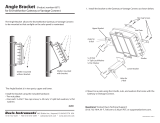 Davis Instruments #6671 Owner's manual
Davis Instruments #6671 Owner's manual
-
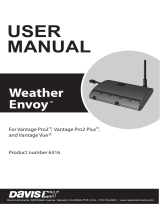 Davis Instruments 6316C User manual
Davis Instruments 6316C User manual
-
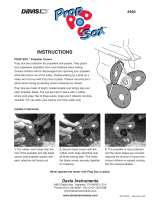 Davis Instruments 450 Owner's manual
Davis Instruments 450 Owner's manual
-
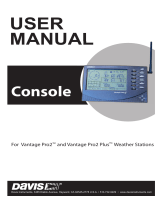 Davis Instruments Vantage Pro2 Console User manual
Davis Instruments Vantage Pro2 Console User manual
-
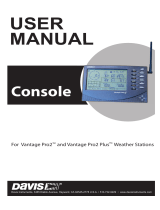 Davis Instruments Vantage Pro2 Console User manual
Davis Instruments Vantage Pro2 Console User manual
-
Davis Instruments 6322C User manual
-
Davis Instruments 6322C User manual
-
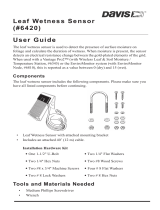 Davis Instruments Leaf Wetness Sensor Owner's manual
Davis Instruments Leaf Wetness Sensor Owner's manual










